
The Enchanting Shores of Copacabana, Bolivia
Discover Copacabana, Bolivia: A picturesque town on Lake Titicaca's shores, offering breathtaking views, cultural heritage, and a gateway to the mystical Isla del Sol.
Nestled on the stunning shores of Lake Titicaca, Copacabana is a picturesque town that captivates visitors with its natural beauty and rich cultural heritage. This charming destination serves as a gateway to the mystical Isla del Sol and offers breathtaking vistas of the world's highest navigable lake. The serene atmosphere and friendly locals make it an ideal spot for relaxation and exploration alike. Copacabana's Basilica of Our Lady of Copacabana is a must-see landmark. This beautiful church, dedicated to the patron saint of Bolivia, draws pilgrims and tourists alike. Its striking white facade and intricate interiors are a testament to the town's deep-rooted spiritual traditions. Don’t miss the chance to witness a 'Bendición de Movilidades,' a unique ritual where vehicles are blessed for safe travels. Adventure seekers can hike up Cerro Calvario, a hill offering panoramic views of Lake Titicaca and the surrounding landscape. The climb is adorned with religious shrines and is a popular spot for both spiritual reflection and photography. For a more relaxed experience, take a boat ride to Isla del Sol, where ancient Inca ruins and traditional villages await. The island is perfect for day trips or overnight stays, providing a glimpse into the region's storied past. Copacabana also offers a vibrant local market where visitors can shop for handicrafts, textiles, and souvenirs. Sample the local cuisine, particularly the fresh trout from Lake Titicaca, which is a culinary highlight. The town’s laid-back vibe, combined with its rich history and stunning natural surroundings, make Copacabana a must-visit destination in Bolivia.
Local tips in Copacabana
- Pack warm clothing, as temperatures can drop significantly in the evenings.
- Take a guided tour to Isla del Sol to fully appreciate its historical significance.
- Try the local trout from Lake Titicaca, a culinary delight you shouldn’t miss.
- Visit the Basilica early in the morning to avoid the crowds and enjoy a peaceful experience.
- Bring cash, as not all places accept credit cards.
The Enchanting Shores of Copacabana, Bolivia
Nestled on the stunning shores of Lake Titicaca, Copacabana is a picturesque town that captivates visitors with its natural beauty and rich cultural heritage. This charming destination serves as a gateway to the mystical Isla del Sol and offers breathtaking vistas of the world's highest navigable lake. The serene atmosphere and friendly locals make it an ideal spot for relaxation and exploration alike. Copacabana's Basilica of Our Lady of Copacabana is a must-see landmark. This beautiful church, dedicated to the patron saint of Bolivia, draws pilgrims and tourists alike. Its striking white facade and intricate interiors are a testament to the town's deep-rooted spiritual traditions. Don’t miss the chance to witness a 'Bendición de Movilidades,' a unique ritual where vehicles are blessed for safe travels. Adventure seekers can hike up Cerro Calvario, a hill offering panoramic views of Lake Titicaca and the surrounding landscape. The climb is adorned with religious shrines and is a popular spot for both spiritual reflection and photography. For a more relaxed experience, take a boat ride to Isla del Sol, where ancient Inca ruins and traditional villages await. The island is perfect for day trips or overnight stays, providing a glimpse into the region's storied past. Copacabana also offers a vibrant local market where visitors can shop for handicrafts, textiles, and souvenirs. Sample the local cuisine, particularly the fresh trout from Lake Titicaca, which is a culinary highlight. The town’s laid-back vibe, combined with its rich history and stunning natural surroundings, make Copacabana a must-visit destination in Bolivia.
When is the best time to go to Copacabana?
Iconic landmarks you can’t miss
Copacabana La Paz
Experience the charm of Copacabana, La Paz, where stunning lake views, rich culture, and vibrant markets await your discovery.
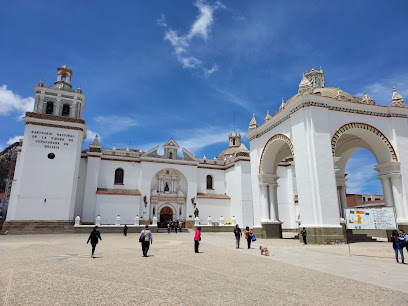
Cerro Calvario
Discover unparalleled views of Lake Titicaca from Cerro Calvario, a serene observation deck in Copacabana, Bolivia, perfect for nature lovers and photographers.
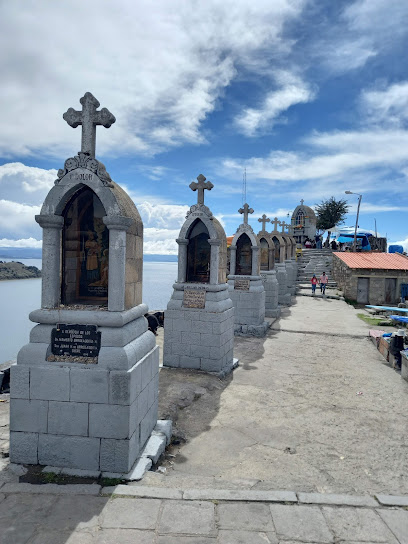
Basilica of Our Lady of Copacabana
Experience the divine beauty of the Basilica of Our Lady of Copacabana, a stunning Catholic church and a cultural gem by Lake Titicaca.
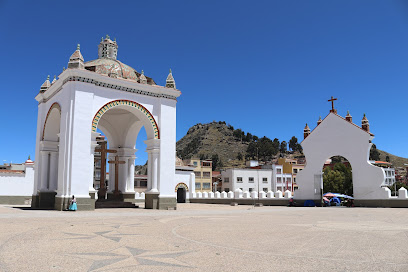
Hostal La Cúpula
Discover the charm of Copacabana at Hostal La Cúpula, uniquely themed accommodations with stunning views of Lake Titicaca and a warm, welcoming atmosphere.
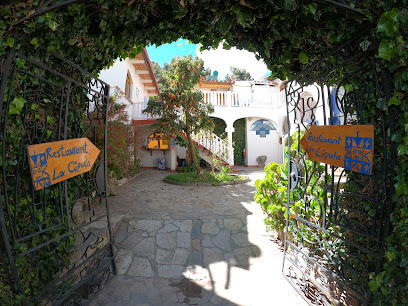
Hostal Las Olas
Discover comfort and charm at Hostal Las Olas, your tranquil retreat in Copacabana with stunning views of Lake Titicaca.
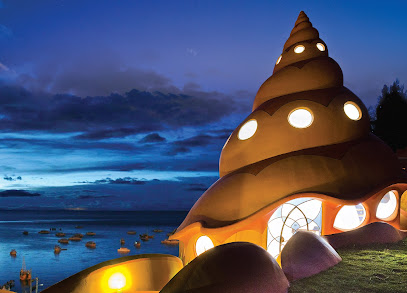
La Horca del Inca (Mirador del Inca)
Discover the fascinating history and stunning vistas at La Horca del Inca, an archaeological gem in Copacabana, Bolivia.
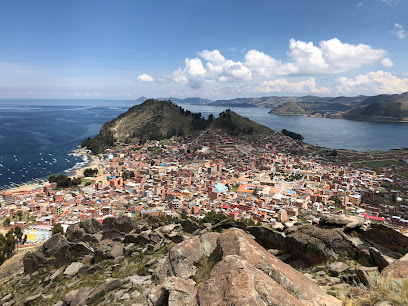
Playa de Copacabana
Discover the enchanting Playa de Copacabana, a beautiful lakeside beach in Bolivia, offering stunning views and rich cultural experiences.

Roca Sagrada
Discover the ancient wonders of Roca Sagrada, an archaeological site in Comunidad Challapampa that unveils the rich cultural heritage of Bolivia.
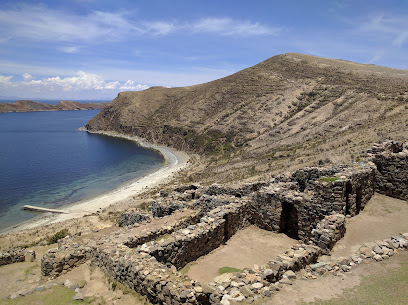
La Orilla
Discover the authentic tastes of Bolivia at La Orilla, a top Latin American restaurant with stunning views of Lake Titicaca.
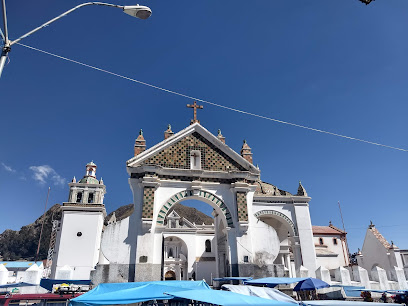
Chincana Labyrinth
Discover the ancient secrets of the Chincana Labyrinth on Isla del Sol, a mesmerizing archaeological site rich in Inca history and stunning lake views.
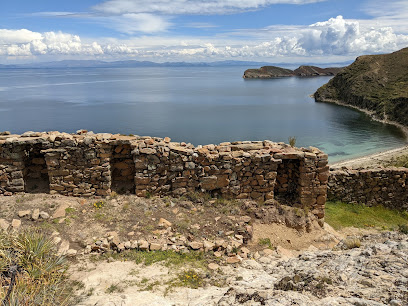
Point de vue sur copacabana
Discover the stunning landscapes and vibrant culture at Point de vue sur Copacabana, the ultimate viewpoint on the shores of Lake Titicaca.
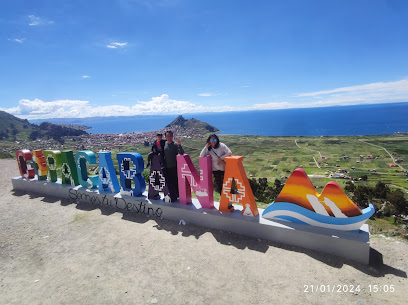
Baño del Inca
Discover the rich history and stunning natural beauty of Baño del Inca, a captivating landmark near Copacabana, Bolivia.
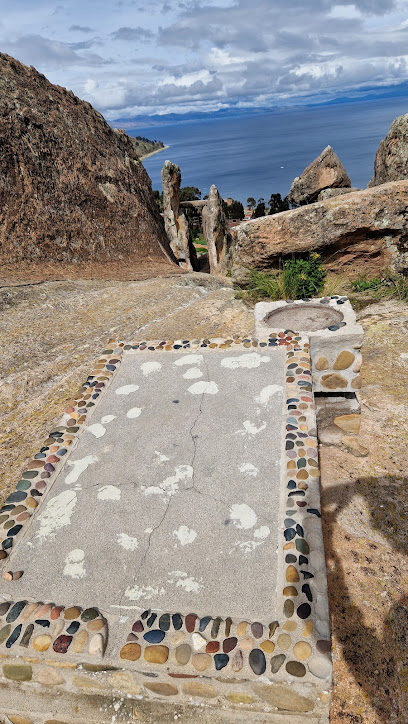
Piedras talladas, Kopacati
Explore the mystical stone carvings of Piedras Talladas in Kopacati, Bolivia, a captivating historical landmark rich in cultural heritage and stunning landscapes.
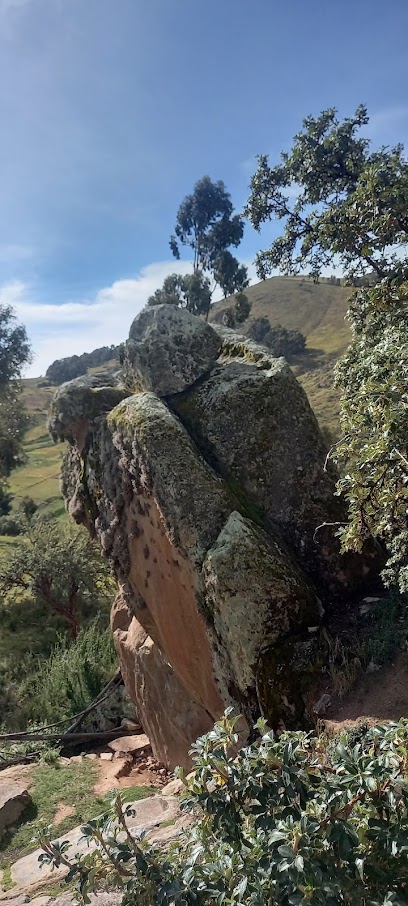
Pachat'aqa
Uncover the ancient mysteries of Pachat'aqa, an archaeological site in Bolivia that offers breathtaking views and deep cultural heritage.

Península de Copacabana
Discover the breathtaking beauty and rich culture of the Peninsula de Copacabana, a must-visit destination on the shores of Lake Titicaca in Bolivia.
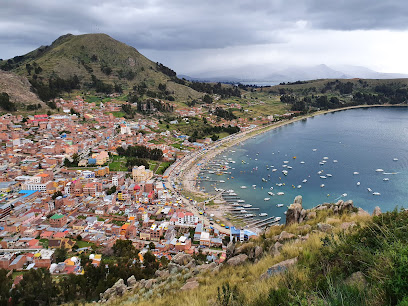
Unmissable attractions to see
Lake Titicaca
Discover the enchanting beauty of Lake Titicaca, the highest navigable lake in the world, where culture and nature intertwine in breathtaking harmony.
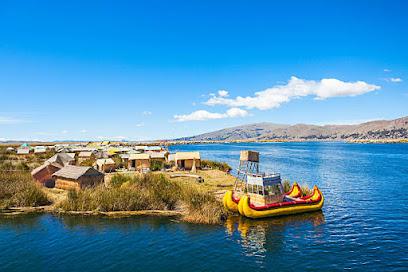
Parque Estadual da Chacrinha
Explore the lush landscapes and rich history of Parque Estadual da Chacrinha, a serene state park in the heart of Copacabana, Rio de Janeiro.
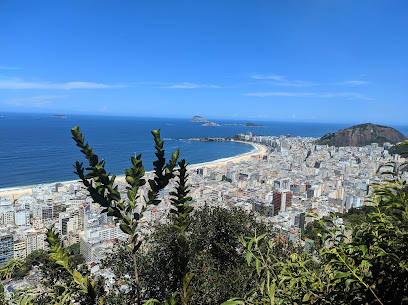
Basilica of Our Lady of Copacabana
Discover the Basilica of Our Lady of Copacabana: a majestic church steeped in history, stunning architecture, and breathtaking views of Lake Titicaca.
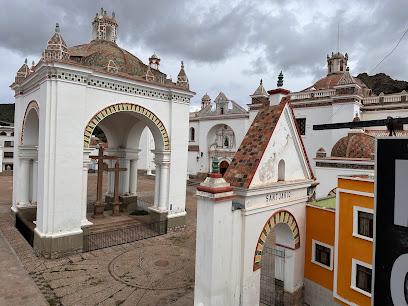
Isla del Sol
Experience the breathtaking beauty and ancient history of Isla del Sol, the heart of Inca culture on Lake Titicaca, Bolivia.
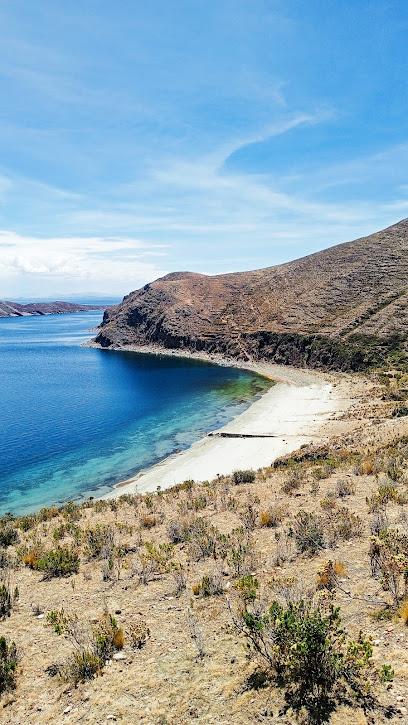
Gruta da Imprensa
Experience the breathtaking views and rich culture of Gruta da Imprensa, a hidden gem in the heart of Rio de Janeiro's Vidigal neighborhood.
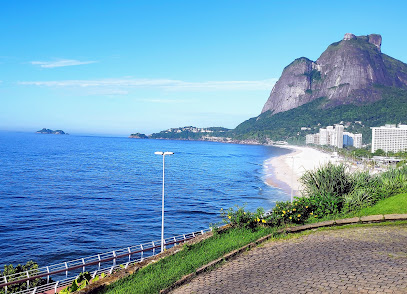
Monumento à Princesa Isabel, a Redentora
Explore the Monumento à Princesa Isabel, a historic landmark in Copacabana that honors the legacy of Princess Isabel and offers stunning views and cultural experiences.
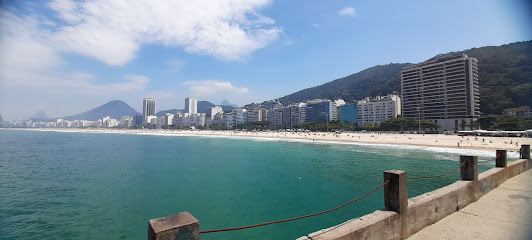
Summit Cannons
Explore the artistic treasures of Summit Cannons, a captivating museum in Copacabana with stunning ocean views and rich cultural heritage.
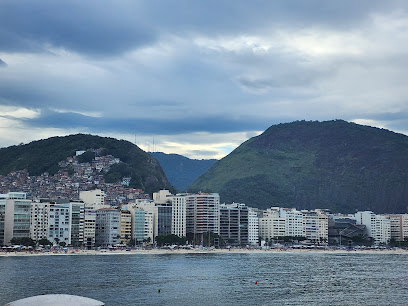
Aramu Muru
Explore Aramu Muru, an ancient archaeological site in Marcollo, Peru, rich in history and spiritual significance amidst breathtaking Andes landscapes.
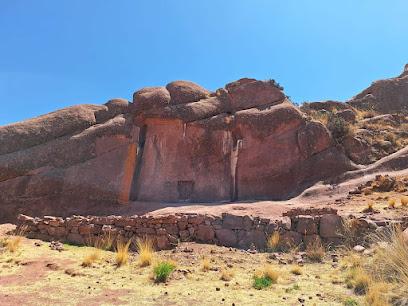
La Horca del Inca (Mirador del Inca)
Explore La Horca del Inca, an archaeological gem in Copacabana offering breathtaking views and a deep dive into ancient Incan history.
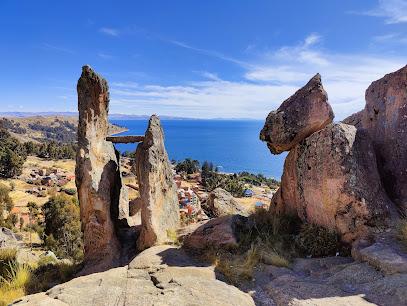
La Horca del Inca (Mirador del Inca)
Discover the ancient allure of La Horca del Inca in Copacabana, where breathtaking views and rich Inca history await every traveler.
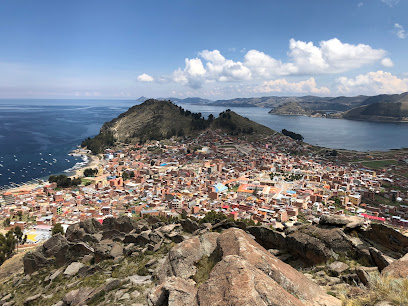
Manuel Campos Square of Peace
Experience tranquility and culture at Manuel Campos Square of Peace, a serene plaza in the vibrant Copacabana district of Rio de Janeiro.
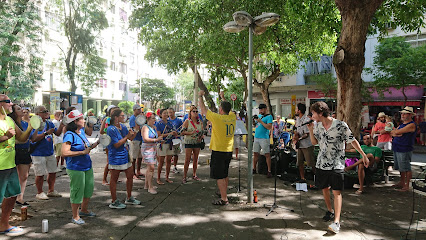
Roca Sagrada
Discover the enchanting beauty and cultural significance of Roca Sagrada, an archaeological gem in the heart of Challapampa, Bolivia.
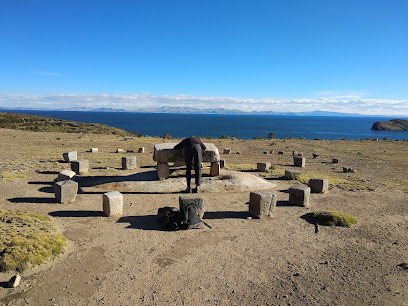
Isla de la Luna
Explore the serene beauty and rich history of Isla de la Luna, a mystical island in Bolivia's Lake Titicaca, perfect for relaxation and adventure.
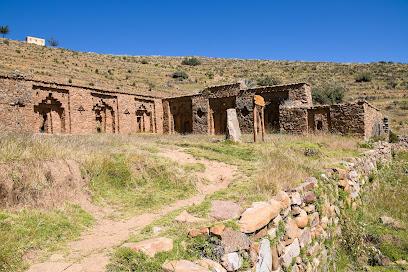
Favela Museum
Explore the Favela Museum in Ipanema, where art and history converge to unveil the vibrant culture of Rio's favelas.
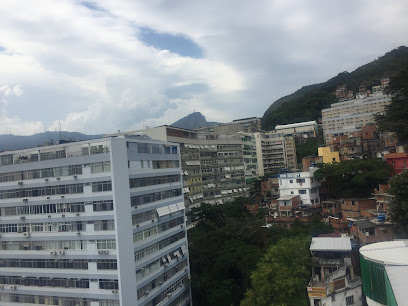
Museo del Poncho
Explore the vibrant world of Bolivian textiles at Museo del Poncho in Copacabana, a cultural gem showcasing traditional craftsmanship.
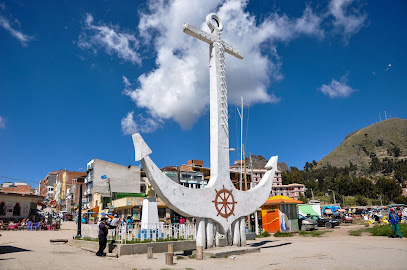
Essential places to dine
Restaurant La fortaleza del sabor
Discover the authentic flavors of Bolivia at Restaurant La Fortaleza del Sabor in scenic Copacabana.
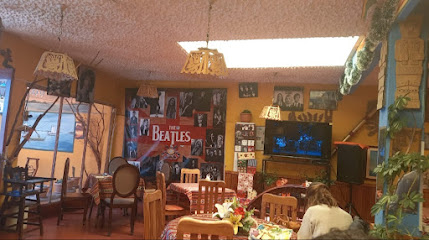
Ali
Discover authentic Italian flavors at Restaurant Ali in Copacabana - a delightful culinary journey by Lake Titicaca.
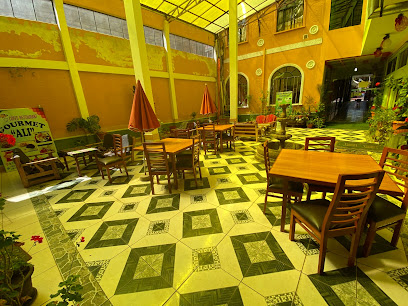
Alax Pacha
Discover the flavors of Copacabana at Alax Pacha - where delicious pizza meets delightful vegetarian cuisine.

Jardin Bolivia
Experience authentic Bolivian flavors amidst serene landscapes at Jardin Bolivia in Copacabana.
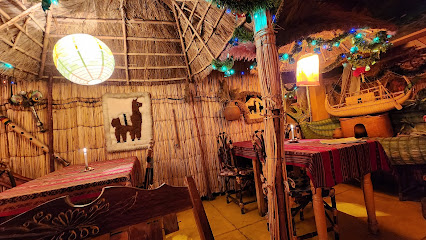
Pan America
Experience authentic Italian flavors at Pan America in Copacabana—home to delicious pizzas and a cozy atmosphere perfect for any occasion.
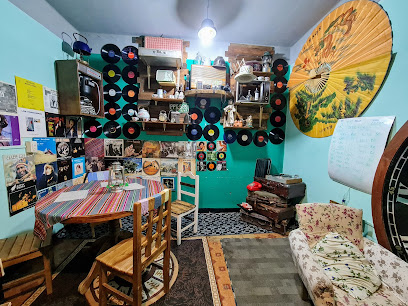
La Orilla
Experience authentic Bolivian flavors at La Orilla, where traditional Latin American cuisine meets stunning views of Lake Titicaca.
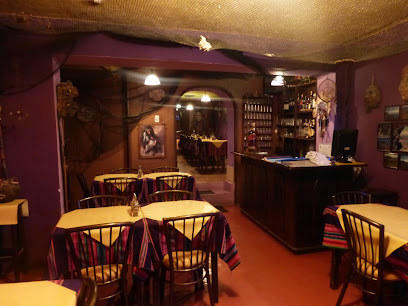
RESTAURANTE LA CÚPULA
Discover authentic Bolivian cuisine at Restaurante La Cúpula while enjoying breathtaking views over Lake Titicaca.
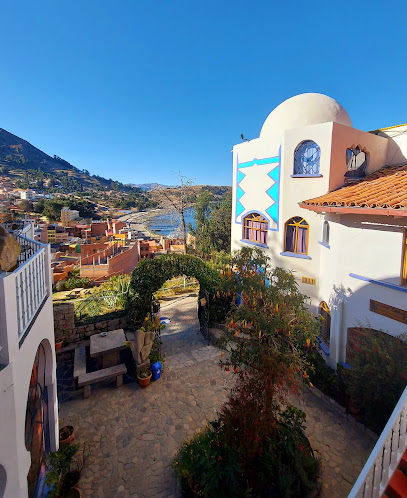
Sapori D'Italia
Discover the taste of Italy at Sapori D'Italia in Copacabana – where every dish is crafted with love and authenticity.
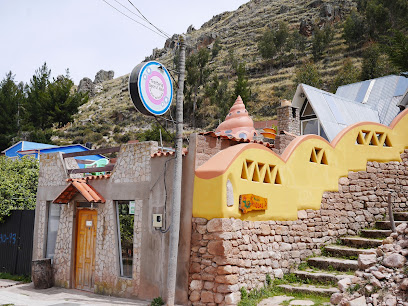
Mauraz
Savor authentic Latin American cuisine in Copacabana's vibrant atmosphere, just steps away from breathtaking beaches.
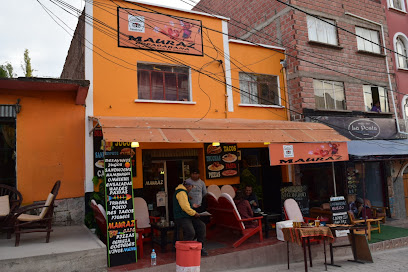
Restaurant & Bar BEK
Experience the vibrant culinary scene at Restaurant & Bar BEK in Copacabana – where traditional Bolivian flavors meet modern gastronomy.
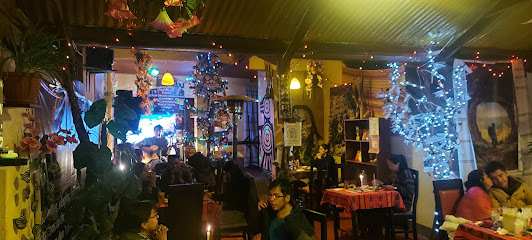
La posada del lago
Experience authentic South American cuisine at La Posada del Lago, overlooking beautiful Lake Titicaca in Copacabana.
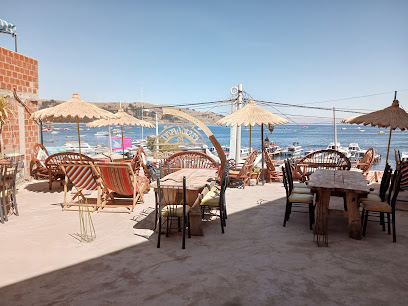
RÚSTICA RESTAURANT PARRRILLERO
Experience authentic Bolivian cuisine at Rústica Restaurant Parrillero in Copacabana - a culinary gem by Lake Titicaca.
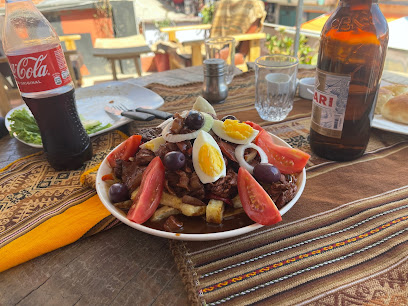
Europa
Savor authentic Italian cuisine at Europa in Copacabana – where every dish tells a story.
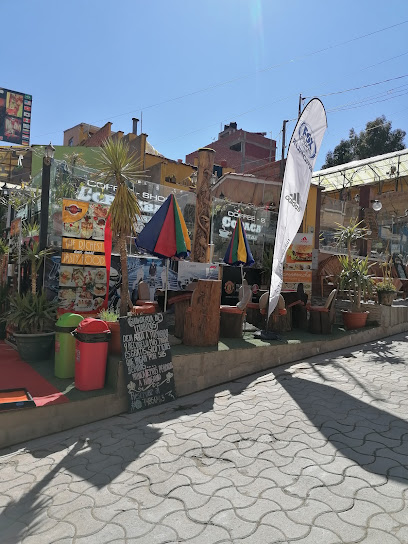
Puerta Del Sol
Discover authentic South American flavors at Puerta Del Sol in Copacabana – where culture meets culinary delight!
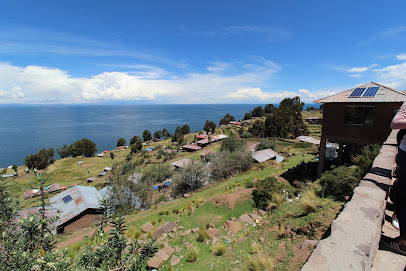
Restaurante Embarcadero
Experience authentic Bolivian cuisine at Restaurante Embarcadero, where every meal is a celebration of South American flavors near Lake Titicaca.
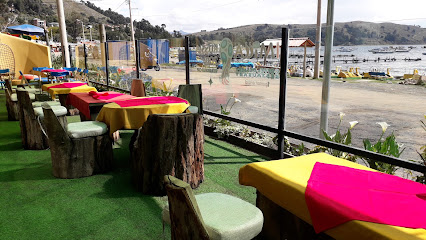
Markets, malls and hidden boutiques
Alax Pacha
Experience the fusion of traditional Bolivian cuisine and gourmet pizza at Alax Pacha in beautiful Copacabana.
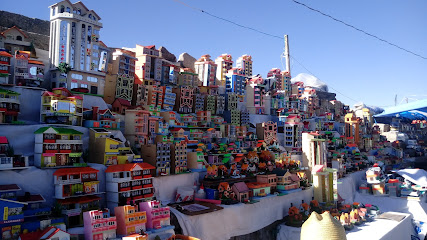
Mercado Copacabana
Explore Mercado Copacabana - A vibrant market filled with local flavors, crafts, and the true essence of Bolivian culture.

LAUNDRY SERVICE y TIENDA DE ABARROTES
Discover the unique blend of Russian flavors and convenient laundry services in the heart of Copacabana, Bolivia.
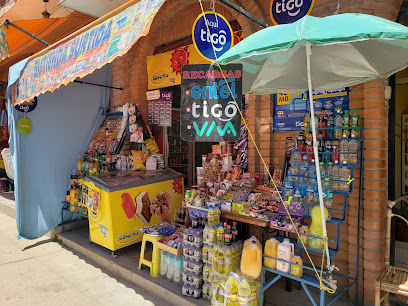
Salón de Belleza Madeline & Benjamin
Experience ultimate relaxation and rejuvenation at Salón de Belleza Madeline & Benjamin in Copacabana, the go-to destination for beauty and wellness.
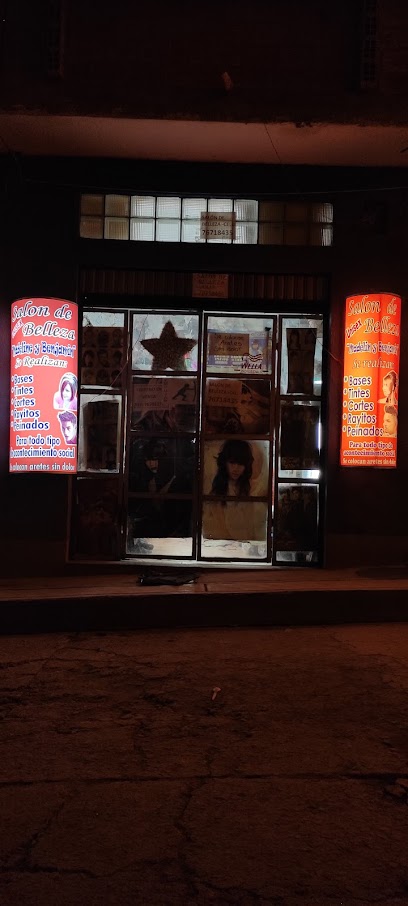
Farmacia V. De La Candelaria, Sucursal
Farmacia V. De La Candelaria: Your trusted pharmacy in Copacabana, providing essential health and wellness products for travelers.
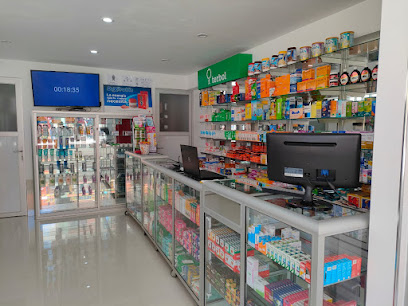
Maruchefs: productos de calidad, condimentos, cereales y más
Experience the best of Copacabana's local flavors at Maruchefs, your go-to grocery store for quality products and unique culinary finds.
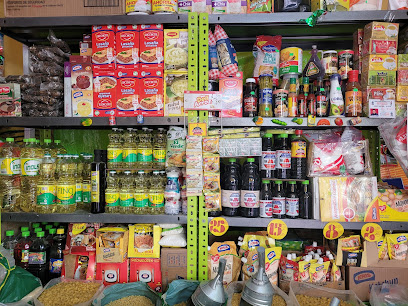
Lubricantes Pepe`Store
Explore Lubricantes Pepe in Copacabana for unique automotive supplies and a taste of local Bolivian culture.
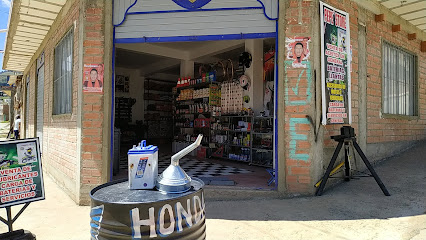
Truchas TITIKAKA
Explore authentic Bolivian flavors and local delights at Truchas TITIKAKA in Copacabana, your perfect grocery stop for a taste of the Andes.

Artesanias Wara
Explore the vibrant world of Bolivian crafts at Artesanias Wara in Copacabana, where tradition meets creativity in every handmade piece.

Micro Market Simple
Explore Micro Market Simple: Your destination for unique Bolivian home goods in the heart of Copacabana, perfect for souvenirs and local treasures.

Librería SAN VALENTÍN
Explore Librería San Valentín in Copacabana for a unique selection of school supplies and local crafts, capturing the essence of Bolivian education and creativity.
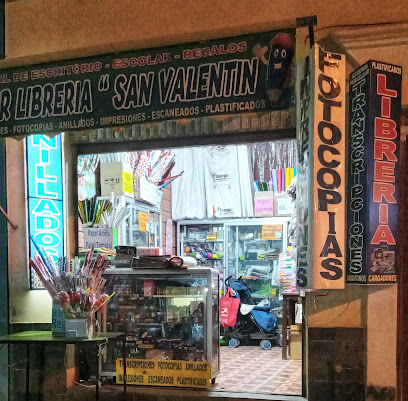
Pastelería INTI
Discover the enchanting flavors of Bolivia at Pastelería INTI, a delightful cake shop in Copacabana, offering an array of traditional pastries and cakes.

Abartotes Y Bebidas Romero
Experience the vibrant flavors of Bolivia at Abartotes Y Bebidas Romero, a local grocery store in Copacabana offering authentic snacks and ingredients.

Bazar Carolina
Explore Bazar Carolina in Copacabana for unique Bolivian crafts and home goods that embody local culture and artistry.

La Paz
Discover the vibrant shopping experience at La Paz, the cultural heart of Copacabana, featuring local crafts, delicious cuisine, and a lively atmosphere.

Essential bars & hidden hideouts
Restaurant La fortaleza del sabor
Experience the essence of Bolivian cuisine at La Fortaleza del Sabor, a culinary treasure in Copacabana, perfect for every food lover.
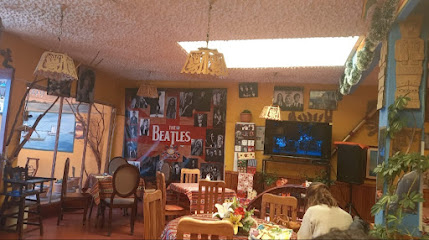
Ali
Savor authentic Italian cuisine at Ali in Copacabana, where every meal is a delightful journey through Italy’s rich culinary traditions.
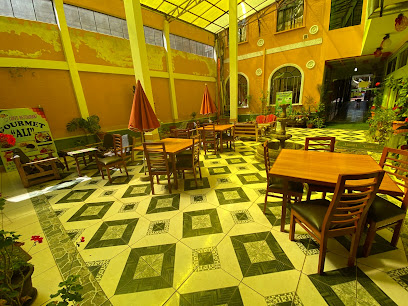
Alax Pacha
Discover Alax Pacha in Copacabana: A delightful gastropub offering mouthwatering pizzas and vegetarian delights amidst stunning lake views.
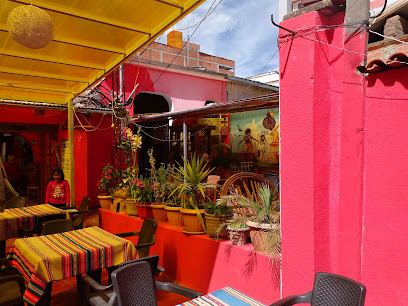
Jardin Bolivia
Experience the authentic taste of Bolivia at Jardin Bolivia, a culinary treasure in Copacabana, where every dish tells a story of local flavors.
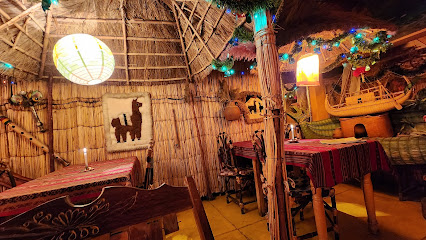
Pan America
Experience the vibrant culinary scene at Pan America, a must-visit restaurant in Copacabana blending local flavors with a warm, inviting atmosphere.

El Condor & The Eagle Cafe
Discover the unique flavors and cozy ambiance at El Condor & The Eagle Cafe in Copacabana, the perfect spot to relax and enjoy local cuisine.
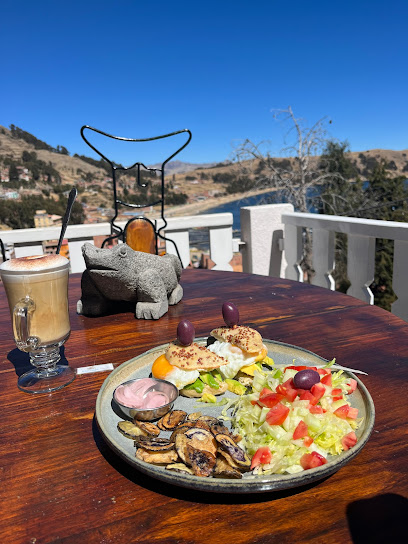
La Orilla
Experience the best of Latin American cuisine at La Orilla in Copacabana, where flavors meet the beauty of Lake Titicaca.
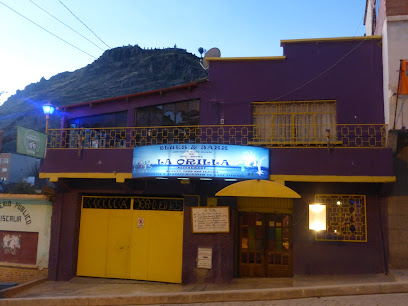
RESTAURANTE LA CÚPULA
Experience the enchanting flavors of Bolivia at Restaurante La Cúpula, overlooking the breathtaking Lake Titicaca in Copacabana.
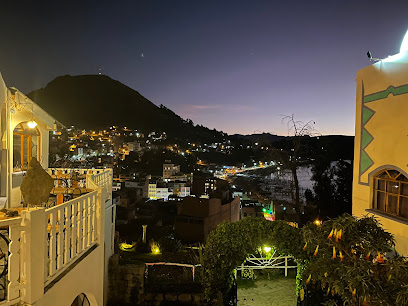
Sapori D'Italia
Discover the authentic flavors of Italy at Sapori D'Italia, where every dish is a celebration of Italian culinary tradition in the heart of Copacabana.
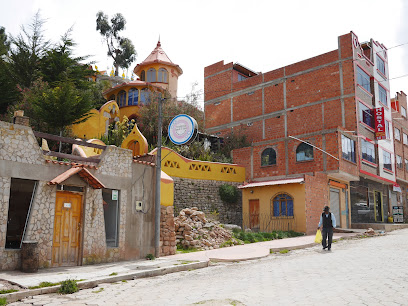
Kiosco #20 TITIKAKA SAGRADO
Discover Kiosco #20 TITIKAKA SAGRADO in Copacabana for authentic Bolivian cuisine and stunning views of Lake Titicaca, a memorable dining experience awaits.
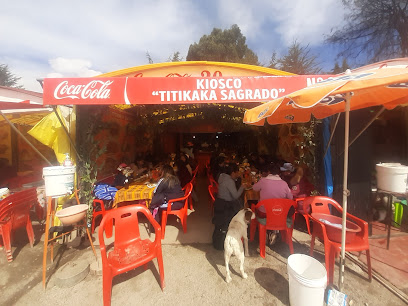
Km Zero
Experience the vibrant nightlife of Copacabana at Km Zero, where great drinks and stunning views come together for an unforgettable evening.

Mauraz
Experience the vibrant culinary delights of Mauraz, a premier Latin American restaurant near Copacabana beach, Bolivia.
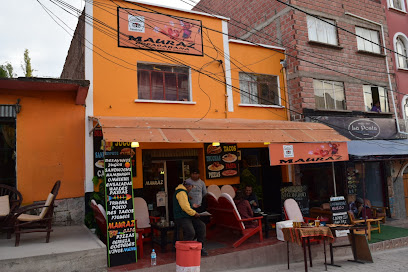
Restaurant & Bar BEK
Savor the flavors of Bolivia at Restaurant & Bar BEK, a delightful gastropub in Copacabana offering a unique culinary experience.
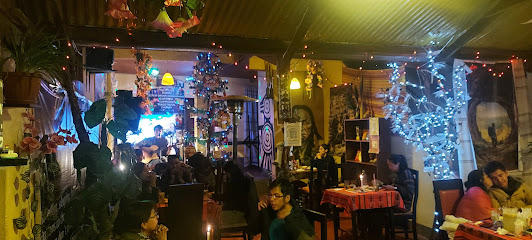
Coffe Bar Taipi Uta
Discover the cozy ambiance and delightful coffee at Coffe Bar Taipi Uta, your perfect retreat in Copacabana, Bolivia.
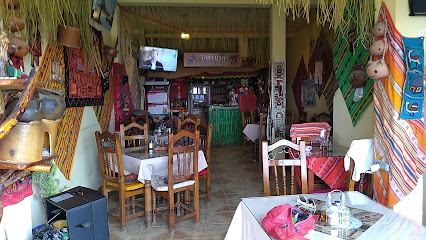
Europa
Experience the flavors of Italy at Europa, a lakeside gem in Copacabana, where every dish is a culinary journey.
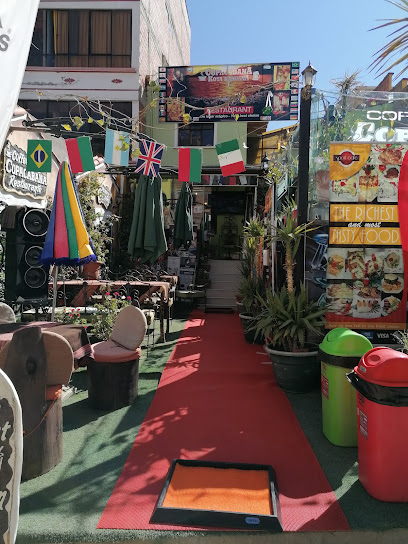
Local Phrases
-
- HelloHola
[oh-lah] - GoodbyeAdiós
[ah-dee-ohs] - YesSí
[see] - NoNo
[noh] - Please/You're welcomePor favor/De nada
[por fah-vor/de nah-dah] - Thank youGracias
[grah-see-ahs] - Excuse me/SorryDisculpe/Lo siento
[dees-kool-pe/loh see-en-toh] - How are you?¿Cómo estás?
[koh-moh es-tahs] - Fine. And you?Bien. ¿Y tú?
[byen. ee too] - Do you speak English?¿Hablas inglés?
[ah-blahs een-glays] - I don't understandNo entiendo
[noh en-tyen-doh]
- HelloHola
-
- I'd like to see the menu, pleaseMe gustaría ver el menú, por favor
[may goo-stah-ree-ah ver el meh-noo, por fah-vor] - I don't eat meatNo como carne
[noh koh-moh kahr-neh] - Cheers!¡Salud!
[sah-lood] - I would like to pay, pleaseQuisiera pagar, por favor
[kee-see-air-ah pah-gar, por fah-vor]
- I'd like to see the menu, pleaseMe gustaría ver el menú, por favor
-
- Help!¡Ayuda!
[ah-yoo-dah] - Go away!¡Vete!
[veh-te] - Call the Police!¡Llama a la Policía!
[yah-mah ah lah poo-lee-see-ah] - Call a doctor!¡Llama a un médico!
[yah-mah ah oon meh-dee-koh] - I'm lostEstoy perdido/a
[es-toy pehr-dee-doh/ah] - I'm illEstoy enfermo/a
[es-toy ehn-fehr-moh/ah]
- Help!¡Ayuda!
-
- I'd like to buy...Quisiera comprar...
[kee-see-air-ah kohm-prahr] - I'm just lookingSolo estoy mirando
[soh-loh es-toy mee-rahn-doh] - How much is it?¿Cuánto cuesta?
[kwan-to kweh-stah] - That's too expensiveEso es muy caro
[eh-soh es moo-ee kahr-oh] - Can you lower the price?¿Puedes bajar el precio?
[pweh-dehs bah-har el preh-syoh]
- I'd like to buy...Quisiera comprar...
-
- What time is it?¿Qué hora es?
[keh oh-rah es] - It's one o'clockEs la una
[es lah oo-nah] - Half past (10)Y media (10)
[ee meh-dee-ah (diez)] - MorningMañana
[mah-nyah-nah] - AfternoonTarde
[tahr-deh] - EveningNoche
[noh-cheh] - YesterdayAyer
[ah-yehr] - TodayHoy
[oy] - TomorrowMañana
[mah-nyah-nah] - 1Uno
[oo-noh] - 2Dos
[dohs] - 3Tres
[trehs] - 4Cuatro
[kwah-troh] - 5Cinco
[seen-koh] - 6Seis
[says] - 7Siete
[see-eh-teh] - 8Ocho
[oh-choh] - 9Nueve
[nweh-veh] - 10Diez
[dyez]
- What time is it?¿Qué hora es?
-
- Where's a/the...?¿Dónde está el/la...?
[dohn-deh es-tah el/lah] - What's the address?¿Cuál es la dirección?
[kwal es lah dee-rehk-syohn] - Can you show me (on the map)?¿Puedes mostrarme (en el mapa)?
[pweh-dehs mohs-trar-meh (en el mah-pah)] - When's the next (bus)?¿Cuándo es el próximo (autobús)?
[kwan-doh es el proh-ksee-moh (ow-toh-boos)] - A ticket (to ....)Un boleto (a ....)
[oon boh-leh-toh (ah)]
- Where's a/the...?¿Dónde está el/la...?
History of Copacabana
-
Long before the arrival of the Spanish, the area around Copacabana was inhabited by indigenous peoples, most notably the Tiwanaku civilization. This ancient culture thrived around Lake Titicaca from approximately 300 to 1100 AD, leaving behind remarkable stone ruins and artifacts that hint at their advanced understanding of architecture and agriculture.
-
The Incan Empire expanded into the region in the mid-15th century, incorporating Copacabana and its surroundings into their vast network. The Incas revered Lake Titicaca as a sacred body of water, believing it to be the birthplace of the Sun God, Inti. They constructed ceremonial sites and temples in the area, making it an important religious and cultural hub.
-
With the arrival of the Spanish conquistadors in the 16th century, Copacabana underwent significant changes. The Spanish brought Christianity, leading to the construction of the famous Basilica of Our Lady of Copacabana. This church, completed in 1619, became a pilgrimage site for both indigenous peoples and Spanish settlers, blending elements of Catholicism with local traditions.
-
One of the most pivotal events in Copacabana's history is the miracle associated with the Virgin of Copacabana. According to legend, the Virgin Mary appeared to local fishermen in the form of a statue, leading to numerous miracles and healings. This event solidified the town's status as a spiritual center, attracting pilgrims from across the continent.
-
Following Bolivia's independence from Spanish rule in 1825, Copacabana continued to be a place of cultural and religious significance. The town played a role in the development of Bolivia's national identity, with its annual festivals and celebrations reflecting the country's rich blend of indigenous and colonial heritage.
-
Today, Copacabana is a vibrant town that attracts tourists from around the world. It is known for its stunning views of Lake Titicaca, the Basilica of Our Lady of Copacabana, and the traditional 'Blessing of the Automobiles' ceremony, where vehicles are adorned with flowers and blessed by priests. The town remains a living tapestry of history, culture, and spirituality.
Copacabana Essentials
-
Copacabana is located on the southern shore of Lake Titicaca in Bolivia. The closest major city with an international airport is La Paz, roughly 150 kilometers away. From La Paz, you can take a bus or a private taxi to Copacabana. The bus journey typically takes around 3.5 to 4 hours. Alternatively, you can opt for a scenic boat ride from Puno in Peru, which also provides access to Copacabana via Lake Titicaca.
-
Copacabana is a small town, making it easy to explore on foot. For longer distances, local taxis and tuk-tuks are available. Buses and minibuses (micros) are the primary modes of public transport connecting Copacabana with nearby towns and cities. Renting a bicycle is another popular option for tourists who wish to explore the area at their own pace.
-
The official currency in Bolivia is the Boliviano (BOB). While credit cards are accepted in some hotels, restaurants, and shops, it is advisable to carry cash, especially in smaller establishments and markets. ATMs are available in Copacabana, but it is always a good idea to withdraw sufficient cash in La Paz before traveling to ensure you have enough funds.
-
Copacabana is generally a safe destination for tourists. However, it is always wise to take standard precautions. Avoid walking alone at night in unfamiliar areas and keep an eye on your belongings in crowded places. While there are no specific high-crime areas targeting tourists, it is best to stay vigilant and aware of your surroundings.
-
In case of emergency, dial 110 for police assistance or 118 for medical emergencies. The local police station and medical facilities are available in Copacabana. It is recommended to have travel insurance that covers medical emergencies. For minor health issues, there are pharmacies in the town where you can purchase over-the-counter medications.
-
Fashion: Do dress modestly, especially when visiting religious sites. Avoid wearing overly revealing clothing. Religion: Do respect local customs and traditions. Always remove your hat and speak softly when inside churches. Public Transport: Do be respectful and allow elderly passengers to sit. Avoid eating or drinking on public transport. Greetings: Do greet people with a handshake, and use 'Buenos días/tardes' (Good morning/afternoon) as a polite greeting. Eating & Drinking: Do try local delicacies and accept food offerings graciously. Don’t refuse hospitality, as it is considered impolite.
-
To experience Copacabana like a local, visit the local markets where you can buy fresh produce and traditional Bolivian goods. Engage with locals, as they are often friendly and willing to share stories about the town's history and culture. Don’t miss visiting the Basilica of Our Lady of Copacabana, a significant religious site. For a unique experience, take a boat tour to Isla del Sol, which offers breathtaking views and ancient Incan ruins.
Trending Landmark in Copacabana
-
Copacabana La Paz
-
Cerro Calvario
-
Basilica of Our Lady of Copacabana
-
Hostal La Cúpula
-
Hostal Las Olas
-
La Horca del Inca (Mirador del Inca)
-
Playa de Copacabana
-
Roca Sagrada
-
La Orilla
-
Chincana Labyrinth
-
Point de vue sur copacabana
-
Baño del Inca
-
Piedras talladas, Kopacati
-
Pachat'aqa
-
Península de Copacabana
Nearby Cities to Copacabana
-
Things To Do in Puno
-
Things To Do in La Paz
-
Things To Do in Tacna
-
Things To Do in Arequipa
-
Things To Do in Arica
-
Things To Do in Cochabamba
-
Things To Do in Cusco
-
Things To Do in Iquique
-
Things To Do in Machu Picchu
-
Things To Do in Sucre
-
Things To Do in Potosi
-
Things To Do in Uyuni
-
Things To Do in Ayacucho
-
Things To Do in Santa Cruz de la Sierra
-
Things To Do in Ica









